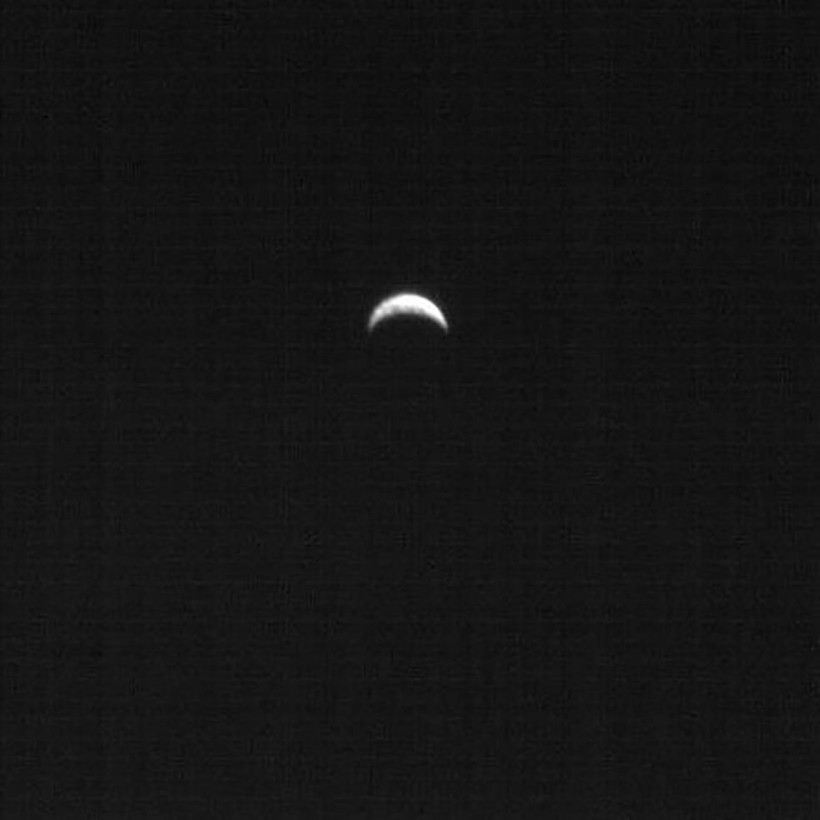The first photos collected by LICIACube, the sole satellite taking part in NASA's Double Asteroid Redirection Test (DART) Planetary Defense program, have been made public by the Italian Space Agency and Argotec.
While the recently launched LICIACube, a small probe with cameras, won't make it out of its mission to divert an asteroid, Gizmodo said this small satellite would record the event in graphic detail.
DART is the space agency's first example of a defensive mechanism to fend off dangerous asteroids. On September 26 at 7:14 p.m. ET, the 1,376-pound spacecraft is slated to collide with Dimorphos.

Image of the Earth acquired by LICIACube’s LEIA camera on Sept. 21, 2022.
Italy's LICIACube Shares Photo of Deep Space
NASA said the magnificent pictures of a crescent Earth and the Pleiades star cluster, popularly known as the Seven Sisters, were taken earlier this week by LICIACube as part of the procedure to calibrate the tiny spacecraft and its cameras.
On September 11, LICIACube, a contribution from the Italian Space Agency (ASI), was released from the DART mission.
With its two optical cameras, LUKE (LICIACube Unit Key Explorer) and LEIA (LICIACube Explorer Imaging for Asteroid), it is intended to chronicle the consequences of DART's impact, collecting distinctive photos of the asteroid surface as well as of the debris blasted from the newly created crater.
Each camera will locate and follow the target asteroid Dimorphos throughout DART's flyby to provide scientific data for the microsatellite's autonomous system.

Image of the Pleiades star cluster acquired by LICIACube’s LUKE camera on Sept. 22, 2022.
ALSO READ: Jupiter's Cyclone Perfect Geometric Arrangement Stayed Stable For Years
About LICIACube
When DART is expected to collide with Dimorphos on Monday at 15,000 miles per hour, LICIACube will fly by the scene. The Italian spacecraft will document the collision zone, debris, and DART's dying seconds using its two cameras, LUKE and LEIA.
A narrow field panchromatic camera called LEIA-short for LICIACube Explorer Imaging for Asteroid-was created to take high-resolution pictures from a great distance. Wide-field RGB camera LUKE, also known as the LICIACube Unit Key Explorer, will assist researchers in studying the asteroid's surroundings.
"It's equipped with two cameras that are going to capture direct images of DART's collision and then the ejecta, the pulverized rock that's thrown off during this collision," APL DART coordination lead Nancy Chabot said (via Fox Weather).
While LICIACube saves its data rather than giving it back in real time, DART will continue to provide photos till the end of its life.
The National Institute of Astrophysics, Politecnico di Milano, the University of Bologna, the University of Naples Parthenope, and the Institute of Applied Physics "Nello "Carrara" from the National Research Council collaborate with industrial contractor Argotec SrI to administer the LICIACube project, News Net Nebraska said.
RELATED ARTICLE: Russia Allegedly Wants to Destroy Elon Musk's Starlink Satellites, Here's Why
Check out more news and information on Space in Science Times.














